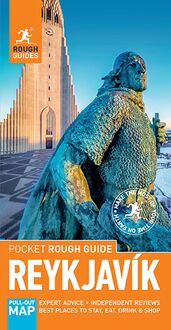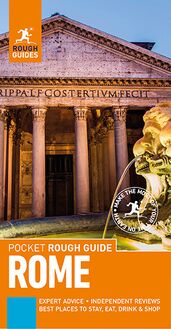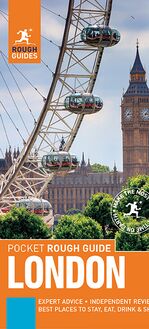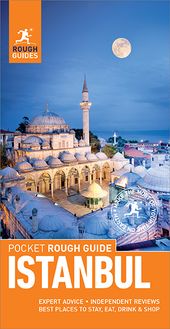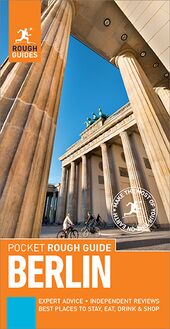-
 Univers
Univers
-
 Ebooks
Ebooks
-
 Livres audio
Livres audio
-
 Presse
Presse
-
 Podcasts
Podcasts
-
 BD
BD
-
 Documents
Documents
-
- Cours
- Révisions
- Ressources pédagogiques
- Sciences de l’éducation
- Manuels scolaires
- Langues
- Travaux de classe
- Annales de BEP
- Etudes supérieures
- Maternelle et primaire
- Fiches de lecture
- Orientation scolaire
- Méthodologie
- Corrigés de devoir
- Annales d’examens et concours
- Annales du bac
- Annales du brevet
- Rapports de stage
La lecture à portée de main
Vous pourrez modifier la taille du texte de cet ouvrage
Découvre YouScribe en t'inscrivant gratuitement
Je m'inscrisDécouvre YouScribe en t'inscrivant gratuitement
Je m'inscrisEn savoir plus
Vous pourrez modifier la taille du texte de cet ouvrage
En savoir plus

Description
Discover the best of Rome with this compact, practical, entertaining Pocket Rough Guide.
This slim, trim treasure trove of trustworthy travel information is ideal for short trip travellers, and covers all the key sights (the Colosseum, Forum, the Pantheon, the Vatican), restaurants, shops, cafes and bars, plus inspired ideas for day-trips, with honest independent recommendations from expert authors.
Features of Pocket Rough Guide Rome:
Practical travel tips: what to see and where to sleep, eat, drink and shop - Pocket Rough Guide Rome features specially selected recommendations for every taste and budget.
Honest independent reviews: written with Rough Guides' trademark blend of humour, honesty and expertise, our expert writers will help you make the most of your trip to Rome.
Incisive area-by-area overviews: covering the Centro Storico, Capitoline Hill, the Vatican and more, the practical Places section provides all you need to know about must-see sights and the best places to eat, drink, sleep and shop.
Time-saving itineraries: the routes suggested by Rough Guides' expert writers cover top attractions like the Trevi Fountain and the Spanish Steps, and hidden gems like the fresco-splashed Santi Quattro Coronati and the secret rooms of St Ignatius.
Day-trips - venture further afield to Ostia Antica or Tivoli. This tells you why to go, how to get there, and what to see when you arrive.
Compact format: packed with pertinent practical information, this is a convenient companion when you're out and about exploring Piazza di Spagna or Campo de' Fiori.
Attractive user-friendly design: features fresh magazine-style layout, inspirational colour photography and colour-coded maps throughout.
Essentials: includes invaluable background information on how to get to Villa Borghese, getting around, health, tourist information, festivals and events, plus an A-Z directory and handy language section and glossary.
You might also be interested in...
The Rough Guide to Italy
About Rough Guides:
Rough Guides have been inspiring travellers for over 35 years, with over 30 million copies sold. Synonymous with practical travel tips, quality writing and a trustworthy 'tell it like it is' ethos, the Rough Guides' list includes more than 260 travel guides to 120+ destinations, gift-books and phrasebooks.
Sujets
Informations
| Publié par | Apa Publications |
| Date de parution | 01 mars 2019 |
| Nombre de lectures | 0 |
| EAN13 | 9781789195323 |
| Langue | English |
| Poids de l'ouvrage | 64 Mo |
Informations légales : prix de location à la page 0,0360€. Cette information est donnée uniquement à titre indicatif conformément à la législation en vigueur.
Extrait
CONTENTS Introduction What’s new When to visit Where to… Things not to miss Itineraries Places The Centro Storico Campo de’ Fiori, the Ghetto and around Piazza Venezia and the Capitoline Hill Ancient Rome The Tridente, Trevi and Quirinale Monti, Termini and the Esquiline The Celian Hill and San Giovanni The Aventine Hill and south Trastevere and the Janiculum Hill Villa Borghese and north The Vatican Day-trips Accommodation Essentials Getting around Directory A-Z Festivals and events Chronology Italian Small print
ROME
When most people think of Rome they imagine sights and monuments: the Colosseum, Roman Forum, the Vatican and St Peter’s – giant, see-before-you-die sights that are reason enough for a visit. It’s true that there’s no more monumental city in the world than Rome; yet the city is much more than an open-air museum. There’s an unpretentiousness to Italy’s capital and its inhabitants that belies the historical significance and marks it out from its rivals further north. It’s almost as if Rome doesn’t have to try too hard, aware that it is simply the most fascinating city in Italy – and arguably the world. With its vibrant street life, culture and food, the city has a modern and irresistible edge. As a historic place, Rome is special enough, but as a contemporary European capital, it is unique.
Piazza del Popolo
Shutterstock
Basilica of Santa Maria in Trastevere
Shutterstock
Packed with the relics of well over two thousand years of inhabitation, Rome is a city in which you could spend a month and still only scratch the surface. The city’s eras crowd in on top of one another to a remarkable degree: there are medieval churches atop ancient basilicas and palaces; houses and apartment blocks that incorporate fragments of Roman columns and inscriptions; and roads and piazzas that follow the lines of ancient amphitheatres and stadiums. It’s not an easy place to absorb on one visit, and you need to take things slowly, even if you have only a couple of days here. Most of the sights can be approached from a number of directions, and part of the allure of Rome is stumbling across things by accident, gradually piecing the city together, rather than marching around to a timetable. It’s best to decide on a few key attractions (check out our ideas in “ Things Not to Miss ” ) and see where your feet take you. Above all, don’t be afraid to just wander.
You’d certainly be mad to risk your blood pressure in any kind of vehicle, and the best way of getting around the city centre is to walk. The same goes for the ancient sites, and probably the Vatican and Trastevere quarter too – although for these last two you might want to jump on a bus or a tram going across the river. Keep public transport for longer hops – down to Testaccio, Ostiense or EUR, or to the catacombs and the Via Appia Antica and, of course, for trips outside the city: to Ostia Antica, Tivoli, the Castelli Romani or nearby beaches.
What’s new
Rome’s ancient sites have been dragged into the twenty-first century with the introduction of virtual reality: at the Domus Aurea , Palazzo Valentini and the Baths of Caracalla , you can now rent VR goggles that restore the structures to their former glory, embellishing the crumbling stone with mosaics and frescoes. After dark, seek out the city’s new crop of speakeasy-style bars; Jerry Thomas Project is one of the best.
When to visit
You can enjoy Rome at any time of year. However, you should, if you can, avoid coming in July and especially August, when it can be uncomfortably hot and most Romans are on holiday – indeed in August you may find many of the restaurants recommended in this book closed. May, June and September are the most pleasant months weather-wise – warm but not unbearably so, and not too humid. April and October can be nice too – the city is less crowded, outside Easter, and days can still be warm and sunny. The winter months can be a good time to visit, but bear in mind that the weather is unpredictable and, while you’ll find everything pleasantly uncrowded, some attractions will have reduced opening hours.
However you get around, Rome’s atmosphere is like no other city’s – a monumental, busy capital and yet an appealingly relaxed one, with a centre that has yet to be consumed by chain stores and multinational hotels. Above all, there has perhaps never been a better time to visit. Rome has finally been hauled into the twenty-first century: museums, churches and other buildings that had been “in restoration” as long as anyone can remember have reopened, and some of the city’s historic collections have been rehoused. Plus, the city’s cultural life is thriving, with frequent open-air concerts and a flourishing film festival in October. Transport, too, is being tackled, with the construction of a third metro line, although it may be some time before this is finished.
Whether all this will irrevocably alter the character of the city remains to be seen – the enhanced crowds of visitors, spurred on by the growth of cheap flights in recent years, are certainly having an impact. But it’s a resilient place, with a character like no other, and, for now at least, there’s definitely no place like Rome.
Dining alfresco in Campo de’ Fiori
Shutterstock
< Back to Introduction
Where to…
Shop
The opening of new flagship stores for the likes of Valentino and Fendi has re-energized Rome’s shopping scene in recent years. For designer fashion, head to the streets close to the Spanish Steps – Via Condotti, Via Borgognona and Via del Babuino. Nearby, Via del Corso offers young, affordable fashion; for smarter wares try Via Cola di Rienzo in Prati. There’s a cluster of independent boutiques around Campo de’ Fiori and in Monti , while antique shops line Via dei Coronari . For foodie souvenirs try the markets on Campo de’ Fiori and in Testaccio . The Sunday Porta Portese flea market is a quintessentially Roman experience.
OUR FAVOURITES: Antica Libreria Cascianelli . Ibiz . Valzani .
Eat
Food is one of the highlights of any trip to Rome. You won’t really eat badly anywhere: there are lots of good choices in the Centro Storico, with unassuming, tucked-away trattorias often full of surprises; the Ghetto and Testaccio have a large number of places serving traditional Roman food, while the densest concentration of restaurants of all kinds can be found in Trastevere . There’s also an abundance of good, honest pizzerias , churning out thin, crispy pizza from wood-fired ovens. Be wary of restaurants adjacent to the major monuments. Note that many places are closed during August.
OUR FAVOURITES: Armando al Pantheon . Da Remo . Trattoria Mont .
Drink
Many Roman bars are traditionally daytime haunts, but there are now also plenty of after-dark bars and pubs, and the city’s old-fashioned wine bars or enoteche have also surged in popularity. The Milanese tradition of aperitivi has taken off in Rome; many places put on a free buffet at 6–7pm to attract pre-dinner drinkers; you can eat your fill for the price of a drink. Wherever you are, you can drink late – most places are open until at least 1am – but Campo de’ Fiori and the Centro Storico near Piazza Navona, and the nightlife districts of Trastevere , Testaccio and Pigneto are the liveliest areas in the city centre.
OUR FAVOURITES: Vinaietto . Antica Enoteca . Ai Tre Scalini .
Go out
There’s a concentration of clubs in Ostiense and Testaccio , while Trastevere and the Centro Storico, from the Jewish Ghetto to the Pantheon, are good for bars, with the odd backstreet club. The San Lorenzo and Pigneto areas near Termini have plenty of laid-back, studenty hangouts, often with live music. More alternative places are run as private clubs – usually known as centri sociali , where entry will be free but you may be stung for a membership fee. In summer, Roman nightlife centres on the Tiber , with pop-up venues and food stalls along its banks.
OUR FAVOURITES: Sharivari . Rashomon . Big Mama .
< Back to Introduction
15 THINGS NOT TO MISS
Roma: nun basta ’na vita” (“a lifetime isn’t enough”), as the locals will tell you, and, indeed, this is a city of numerous highlights, from outstanding art collections and historic architecture to picturesque parks and world-class pizza.
Alamy
ROMAN FORUM AND PALATINE Political, economic and religious hub of ancient Rome, the sprawling Forum is almost unrecognizable today, but no less evocative for that.
Hedda-Gjerpen
VILLA BORGHESE The city centre’s largest open space has plenty to occupy you, with superb galleries, a zoo and a boating lake.
Shutterstock
PIAZZA NAVONA If Rome has a centre, this is probably it: a beautiful oval with Bernini’s Fontana dei Quattro Fium at its heart.
Shutterstock
ST PETER’S Italy’s largest church is stuffed with masterpieces, most notably Michelangelo’s Pietà and Bernini’s baldacchino. It’s worth the climb up the dome for the incredible view.
Dreamstime.com
COLOSSEUM The most photographed of Rome’s monuments, and no wonder. In terms of size, scale and ingenuity, it’s hard to beat.
Alamy
DOMUS AUREA Take a tour of the Emperor Nero’s fascinating and cavernous Golden House, now enhanced with the use of virtual reality.
Shutterstock
BASILICA OF SAN CLEMENTE This fascinating basilica is the epitome of multi-lay
-
 Univers
Univers
-
 Ebooks
Ebooks
-
 Livres audio
Livres audio
-
 Presse
Presse
-
 Podcasts
Podcasts
-
 BD
BD
-
 Documents
Documents
-
Jeunesse
-
Littérature
-
Ressources professionnelles
-
Santé et bien-être
-
Savoirs
-
Education
-
Loisirs et hobbies
-
Art, musique et cinéma
-
Actualité et débat de société
-
Jeunesse
-
Littérature
-
Ressources professionnelles
-
Santé et bien-être
-
Savoirs
-
Education
-
Loisirs et hobbies
-
Art, musique et cinéma
-
Actualité et débat de société
-
Actualités
-
Lifestyle
-
Presse jeunesse
-
Presse professionnelle
-
Pratique
-
Presse sportive
-
Presse internationale
-
Culture & Médias
-
Action et Aventures
-
Science-fiction et Fantasy
-
Société
-
Jeunesse
-
Littérature
-
Ressources professionnelles
-
Santé et bien-être
-
Savoirs
-
Education
-
Loisirs et hobbies
-
Art, musique et cinéma
-
Actualité et débat de société
- Cours
- Révisions
- Ressources pédagogiques
- Sciences de l’éducation
- Manuels scolaires
- Langues
- Travaux de classe
- Annales de BEP
- Etudes supérieures
- Maternelle et primaire
- Fiches de lecture
- Orientation scolaire
- Méthodologie
- Corrigés de devoir
- Annales d’examens et concours
- Annales du bac
- Annales du brevet
- Rapports de stage
